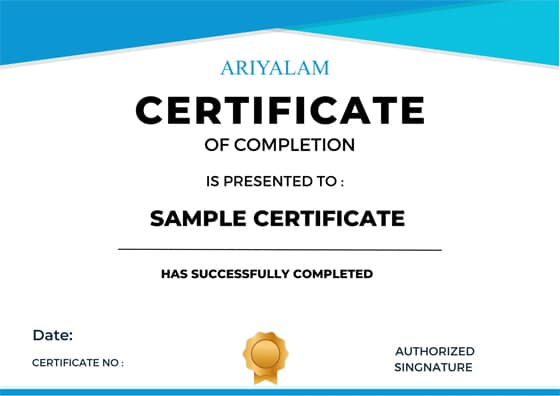Data Analytics Course Online
The data analytics course online teaches how to gather, analyze, and interpret data to make informed decisions. You’ll learn key tools like Excel, SQL, and Python, along with data visualization techniques using Power BI or Tableau. The course covers statistics, data cleaning, and real-world projects. Ideal for beginners or professionals, it equips you with practical skills to excel in data-driven roles across industries.

Data Analytics Course Fees
Key Features
Data Analytics Certification

Key Features
Data Analytics Certification

Data Analytics Course Online Prerequisites:
Before starting a data analytics course online, you should have basic computer skills, an understanding of spreadsheets like Excel, and some familiarity with statistics. Knowing how to use software like Microsoft Office or Google Docs is helpful. While not required, a basic knowledge of programming languages such as Python or SQL will give you an advantage.
Data Analytics Online Course Syllabus
Business Statistics:
Introduction to Statistical Analysis
- Basics of Counting, Probability, and Probability Distributions
- Understanding Sampling and Sampling Distributions
- Estimation Techniques and Hypothesis Testing
- Creating Scatter Plots
- Analysis of Variance (ANOVA) and Chi-Square Test
- Methods for Handling Missing Data (Imputation)
- Cleaning and Preparing Data
- Correlation and Regression Analysis
Introduction to Data Analytics
- Overview of Data Analytics
- What is Data Analytics and Why it Matters
- Different Types of Data Analytics: Descriptive, Diagnostic, Predictive, and Prescriptive
- Benefits of Data Analytics in Business
- How to Use Data Visualization for Better Decisions
- Data Types, Central Tendency (Mean, Median, Mode), and Dispersion (Range, Variance)
- Graphical Tools (Box Plots, Histograms) and Measures of Distribution (Skewness & Kurtosis)
- Basics of Descriptive Statistics
- Understanding Sampling Techniques, Variations, Central Limit Theorem, and Confidence Intervals
Excel: From Basics to Advanced
Basic Excel Functions
- How to Use Text to Columns
- String Functions: Concatenate, Right Function, and Absolute Cell References
- Data Validation, Time and Date Calculations
- Conditional Formatting for Data
Pivot Tables and Charts
- How to Create and Format Pivot Tables
- Filtering, Sorting, and Grouping in Pivot Tables
- Working with Pivot Charts
- Creating and Modifying Different Types of Charts
- Handling Data in Pie Charts, Line Charts, and Bar Charts
Advanced Excel Features
- Data Analysis Tools
- Using Lookup Functions (VLOOKUP, HLOOKUP)
- Removing Duplicates, Cleaning Data with Text Functions
- Using Tables and Ranges Efficiently
- Managing Formulas, Conditional Formatting, and Data Validation
SQL for Data Analysis
Introduction to SQL
- Basics of Databases and Oracle Database
- Retrieve Data with SQL SELECT Statement
- Sorting and Filtering Data in SQL
- Using Single-Row Functions and Conversion Functions
- Aggregate Data (SUM, AVG) and Grouping
- Combining Data from Multiple Tables with Joins
- Writing Subqueries and Using SET Operators
- Managing User Access and Database Objects
- Working with Data in Different Time Zones
- Using Regular Expressions in SQL
Tableau for Data Visualization
Getting Started with Tableau
- Connecting to Data Sources (Excel, SQL Server)
- Creating Hierarchies, Bins, and Joins
- Data Blending from Multiple Sources
Basic Reporting in Tableau
- Using Parameters and Groups for Reports
- Sorting, Filtering, and Adding Totals to Reports
- Creating Folders and Organizing Data
Creating Charts in Tableau
- Building Different Types of Charts: Bar, Line, Pie, Heatmap, Gantt, Histogram, Waterfall, etc.
- Customizing Charts for Better Insights
Advanced Tableau Reports
- Working with Dual Axes, Reference Lines, and Maps
- Integrating Google Maps and Mapbox for Geospatial Data
Dashboards in Tableau
- Designing Interactive Dashboards
- Adding Filters and Formatting for Multiple Devices
- Creating Stories and Publishing Work
Power BI for Business Intelligence
Introduction to Power BI
- Understanding Power BI and its Data Sources
- Connecting to Files (CSV, Excel) and Creating Reports
- Using the Power BI Portal
Building Visualizations
- Creating and Arranging Charts and Graphs
- Using Slicers and Filters for Data Insights
- Downloading and Using Custom Visuals
Reports and Dashboards
- Modifying, Printing, and Sharing Reports
- Pinning Reports to Dashboards for Quick Insights
- Asking Questions with Power BI Q&A Feature
Publishing and Sharing
- Publishing Reports Online and Managing Workspaces
- Sharing Dashboards with Teams
DAX Functions
- Overview of New DAX Functions
- Using Date, Time, Logical, Filter, and Text Functions
Python for Data Analytics
Python Basics
- Print Statements and Comments
- Data Types and Structures (Lists, Dictionaries, Tuples)
- String Manipulations and Input/Output in Python
- Deep Copy and Shallow Copy
- Python Operators and Control Structures
FAQ:
1. What is Data Analytics?
2. Do I need a programming background?
3. What tools will Data Analytics Course Online I learn to use?
You’ll typically learn tools like Excel, SQL, Python, Tableau, and Power BI, which help with analyzing and visualizing data.
4. How long does the data analytics certification course take?
5. What jobs can I get after completing course?
After completing the data analytics course online you can apply for roles like Data Analyst, Business Analyst, Data Scientist, or Data Engineer, depending on your skills and interests.
6. What top companies have Jobs?
Enquiry Now
